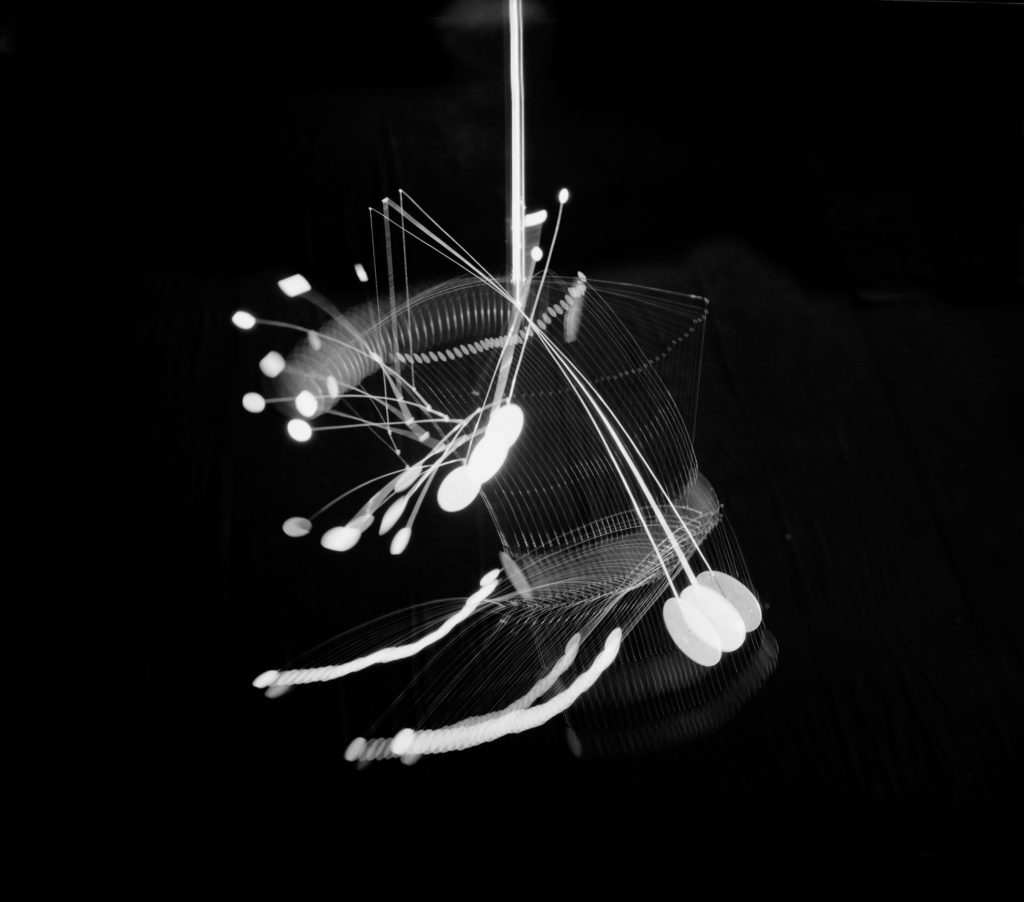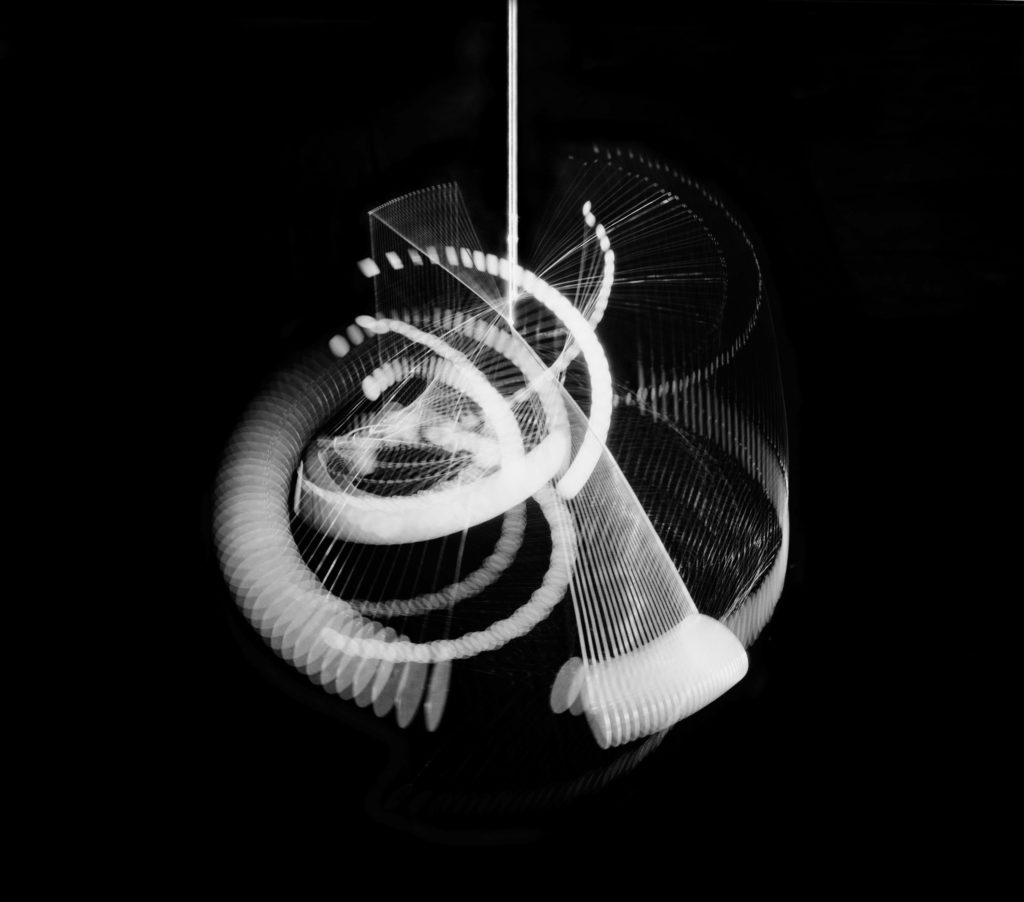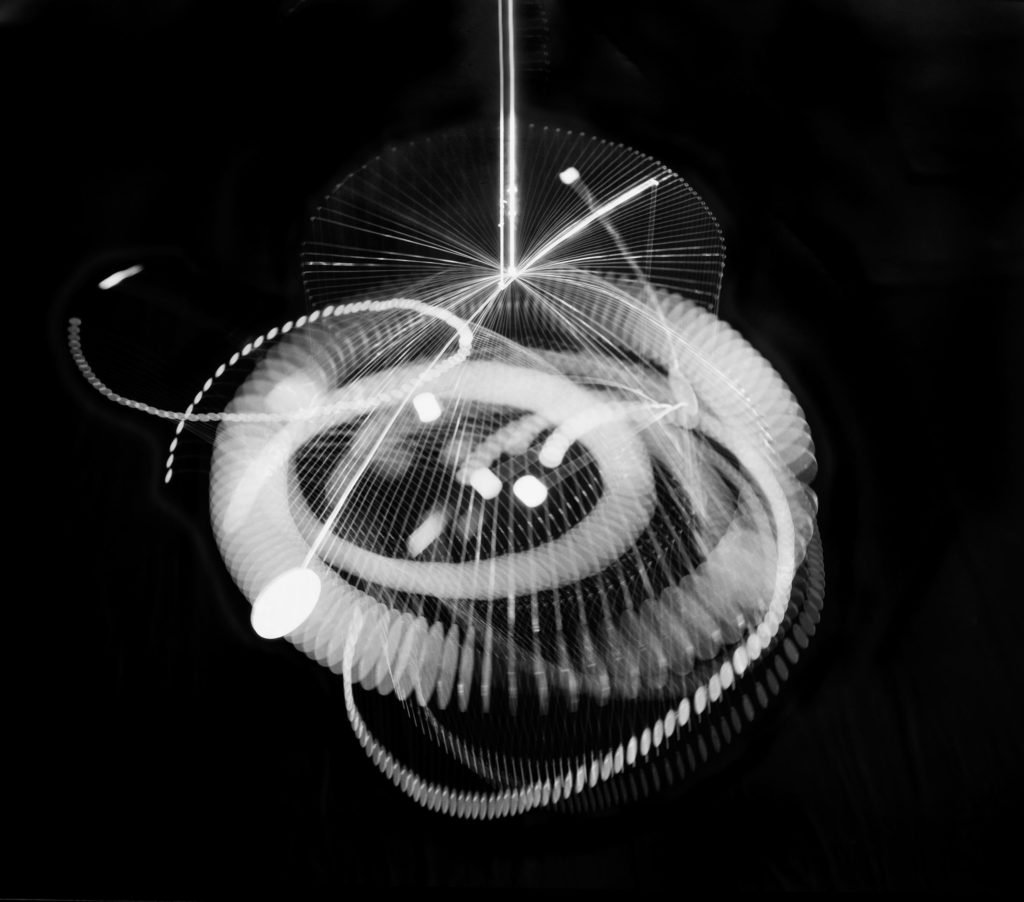Featured Text
What Abstract Art Means to Me
The Museum of Modern Art Bulletin, vol. 18, no. 3 (Spring 1951).
The Museum of Modern Art Bulletin, vol. 18, no. 3 (Spring 1951).
My entrance into the field of abstract art came about as the result of a visit to the studio of Piet Mondrian in Paris in 1930.
I was particularly impressed by some rectangles of color he had tacked on his wall in a pattern after his nature.
I told him I would like to make them oscillate—he objected. I went home and tried to paint abstractly—but in two weeks I was back again among plastic materials.
I think that at that time and practically ever since, the underlying sense of form in my work has been the system of the Universe, or part thereof. For that is a rather large model to work from.
What I mean is that the idea of detached bodies floating in space, of different sizes and densities, perhaps of different colors and temperatures, and surrounded and interlarded with wisps of gaseous condition, and some at rest, while others move in peculiar manners, seems to me the ideal source of form.
I would have them deployed, some nearer together and some at immense distances.
And great disparity among all the qualities of these bodies, and their motions as well.






A very exciting moment for me was at the planetarium—when the machine was run fast for the purpose of explaining its operation: a planet moved along a straight line, then suddenly made a complete loop of 360° off to one side, and then went off in a straight line in its original direction.
I have chiefly limited myself to the use of black and white as being the most disparate colors. Red is the color most opposed to both of these—and then, finally, the other primaries. The secondary colors and intermediate shades serve only to confuse and muddle the distinctness and clarity.
When I have used spheres and discs, I have intended that they should represent more than what they just are. More or less as the earth is a sphere, but also has some miles of gas about it, volcanoes upon it, and the moon making circles around it, and as the sun is a sphere—but also is a source of intense heat, the effect of which is felt at great distances. A ball of wood or a disc of metal is rather a dull object without this sense of something emanating from it.
When I use two circles of wire intersecting at right angles, this to me is a sphere—and when I use two or more sheets of metal cut into shapes and mounted at angles to each other, I feel that there is a solid form, perhaps concave, perhaps convex, filling in the dihedral angles between them. I do not have a definite idea of what this would be like, I merely sense it and occupy myself with the shapes one actually sees.
Then there is the idea of an object floating—not supported—the use of a very long thread, or a long arm in cantilever as a means of support seems to best approximate this freedom from the earth.
Thus what I produce is not precisely what I have in mind—but a sort of sketch, a man-made approximation.
That others grasp what I have in mind seems unessential, at least as long as they have something else in theirs.
Sweeney, James Johnson. Alexander Calder. New York: Museum of Modern Art, 1951.
MonographCalder, Alexander. “Voici une petite histoire de mon cirque.” In Permanence du Cirque. Exhibition Catalogue. Paris: Revue Neuf, 1952.
General ReferenceWorld House Galleries, New York. 4 Masters Exhibition: Rodin, Brancusi, Gauguin, Calder. Exhibition catalogue. 1957.
Alexander Calder, Statement
Group Exhibition CatalogueRodman, Selden, ed. “Alexander Calder.” In Conversations with Artists. New York: Devin-Adair, 1957.
General ReferenceCalder had a major show in 1946 at Galerie Louis Carré in Paris for which Jean-Paul Sartre wrote a seminal essay. He designed sets and costumes for a number of theatrical performances and designed a huge acoustic ceiling for the Aula Magna auditorium at Universidad Central de Venezuela. In 1952, Calder represented the United States at the Venice Biennale, winning the grand prize for sculpture.